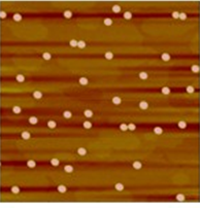
This is a single semester course designed to strengthen the knowledge base of graduate students in the physics and fabrication of low dimensional semiconductors. The first portion of the course is spent reviewing and expanding the fundamental solid state and quantum mechanical principles that are used to describe the optical and electrical properties of low dimensional heterostructures. This is then transitioned into real quantum well heterostructures and quantum dots, with additional emphasis on the different subsets and fabrication methods. The final portion of the course introduces some of the modern novel nanophotonic devices that exploit the unique properties of low dimensional semiconductor structures.
Credit Hours
Prerequisite
Required References
- Class Notes (provided by instructor)
Suggested References
- J. Singh, “Physics of Semiconductors and Their Heterostructures”, McGraw-Hill, Inc., 1993.
- J. Davies, “Physics of Low-Dimensional Semiconductors”, Cambridge University Press, 1998.
- C. Kittel, “Introduction to Solid State Physics”, John Wiley and Sons, Inc., 1996.
- Note: There are numerous solid state and quantum mechanics texts that can be used for reference in substitution of the above.
Grading Policy: (Homework 0%, Quizzes 25%, Mid-Terms 50%, Final Project 25%)
- Homework: Homework will be assigned as needed, and will not be counted towards your final grade.
- Quizzes: Quizzes will be administered during class – they will constitute 25% of your final grade. You will be allowed to drop your lowest scoring quiz.
- Mid-Terms: There will be 2 Mid-Term Exams. Each Mid-Term exam will make up 25% of your final grade, or collectively 50%.
- Final Project: The Final Project will be due near the conclusion of the course. It will constitute 25% of the final grade. Details of the Final Project will be provided well in advance.
Course Outline
I. Fundamentals of Semiconductor Theory
- Crystal Structure and Growth
- Electron States in Solids
- Energy Band Theory (Kronig-Penney)
- Semiconductor Statistics (Distribution and Occupation)
- Intrinsic/Extrinsic Semiconductors
II. Quantum Well Heterostructures
- Infinite Wells
- Finite, Triangular, and Parabolic Wells
- Semiconductor Heterostructures and Band Structures
- Optical Emission/Absorption
- Light Emitting Diodes (LEDs)
- Planar Modulators
III. Optical Properties of 2-D and 3-D Nanostructures
- Classes and Fabrication Methods
- Quantum Wires
- Quantum Dots (Colloidal, Lithographically Defined, and Epitaxial)
- Fermi’s Golden Rule
- Selection Rules
- Polarization Dependent Optical Properties
IV. Low-Dimensional Devices and Concepts
- Quantum Well/Dot Infrared Photodetectors (QWIPs and QDIPs)
- Quantum Dot Lasers (QDLs)
- Quantum Dot Optical Memory/Multi-color Detectors/Emitters
- Quantum Electrodynamics (QED) with QWs/QDs
- Quantum Computation, Teleportation, and Cryptography